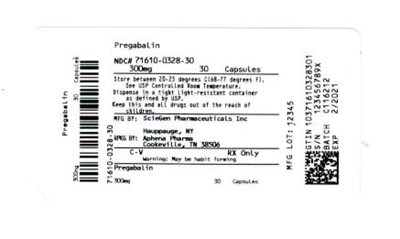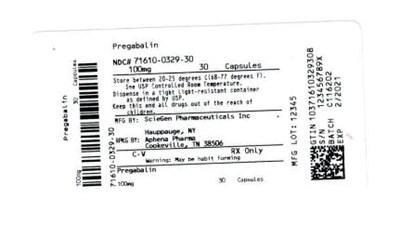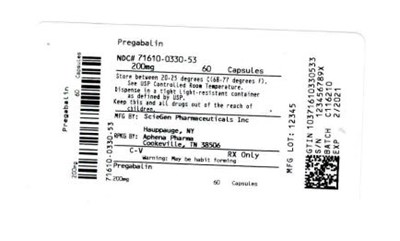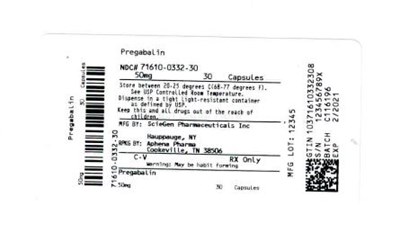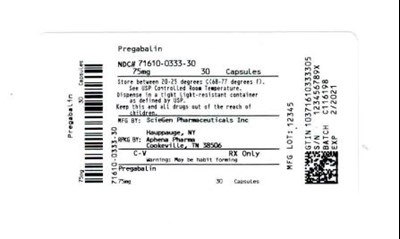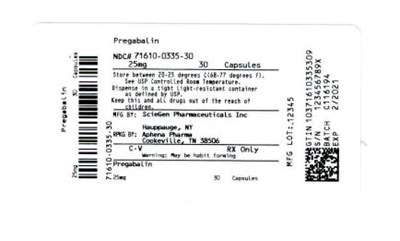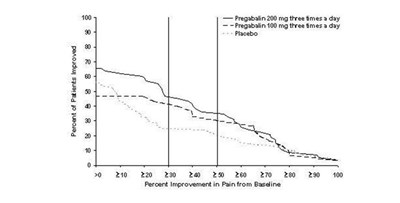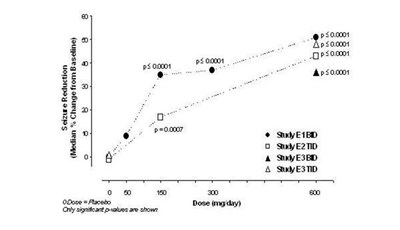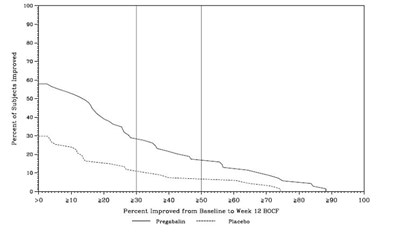Product Images Pregabalin
View Photos of Packaging, Labels & Appearance
Product Label Images
The following 22 images provide visual information about the product associated with Pregabalin NDC 71610-331 by Aphena Pharma Solutions - Tennessee, Llc, such as packaging, labeling, and the appearance of the drug itself. This resource could be helpful for medical professionals, pharmacists, and patients seeking to verify medication information and ensure they have the correct product.
Figure 1 - pregabalin fig01
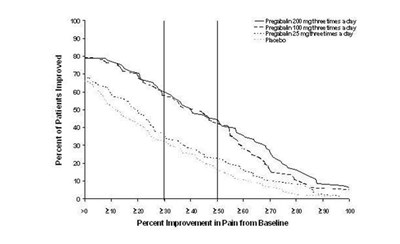
The text seems incomplete and contains non-English characters. Hence, it is not available for evaluation.*
Figure 2 - pregabalin fig02
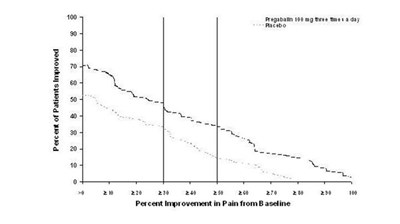
The given text seems to be a table with headers 'Percent of Patients Improved' and 'Percent Improvement in Pain from Baseline'. The values in the table seem to indicate percentages and dosages of some medication, specifically Pregabalin. The last row seems to indicate a duration or a short description, however, it's not enough to provide a useful description.*
Figure 3 - pregabalin fig03
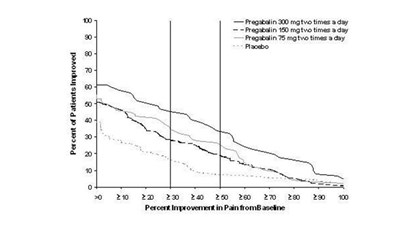
This appears to be a table or chart showing different medications and the percentage of patients who reported improvement while taking them. The medications listed are Pregatalin 300, Pregabain 160, and Pregabalin 75. Each medication is taken multiple times a day. There is also a line graph that shows the percentage improvement in pain compared to a baseline measurement. However, the text is not entirely legible and some characters are unclear, making it difficult to interpret the data accurately.*
Figure 5 - pregabalin fig05
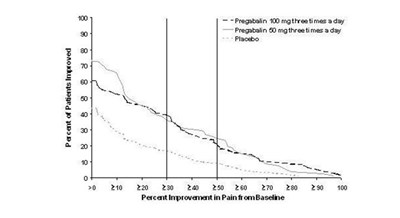
This appears to be a table showing the dosages and improvement in pain for three different treatments: Fregabalin 100mg three times a day, Pregataiin 80mg three times a day, and Placebo. The table shows a list of numbers under "Pacent of Patients Improved" and "Pescent Improvement in Pain from Baseline." However, due to the lack of readability and inconsistent formatting, it is difficult to infer any meaningful conclusions from this text.*
Figure 6 - pregabalin fig06

This appears to be a chart or table with headings for two studies labeled E1 and E3, and a reference to study S5. Dosages of a substance labeled in milligrams per day are listed alongside the term "placebo." There is a mention of statistical significance compared to placebo. Based on this limited information, it is not possible to provide a useful description beyond this.*
Figure 9 - pregabalin fig08

The text represents a chart or graph showing the percentage of patient improvement in pain from baseline for different doses of Pregabalin compared to a placebo. The chart shows the percentage improvement for a Pregabalin daily dose of 300mg and 450mg compared to a placebo. The X-axis of the chart shows values ranging from 20 to 280, and the Y-axis is labeled "Percent Improvement in Pain from Baseline."*
Figure 10 - pregabalin fig09
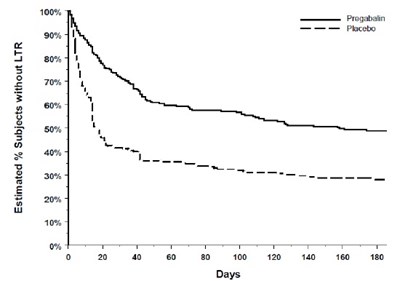
The text appears to be a graph showing the estimated percentage of subjects without LTR (unknown acronym) over time, possibly related to a clinical trial. The graph shows two lines labeled "Progabain" and "Placebo." The x-axis is labeled in days.*
Figure 12 - pregabalin fig11
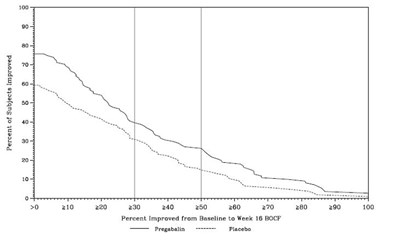
The text provides a graph showing the percentage of subjects who improved from baseline to week 16 BOCF for Pregabalin and Placebo. The graph displays data points at 100, 210, 220, 230, 240, 250, 260, 270 percent improvement and lists Pregabalin and Placebo as the treatments being compared.*
Cockcroft and Gault equation - pregabalin formula

This text appears to be a medical formula for calculating the creatinine clearance rate (CLCT) in patients. The CLCT measures how effectively the kidneys are working to filter waste and excess fluids from the blood. The formula involves subtracting the patient's age from 140, multiplying it by their weight in kilograms, and then multiplying by 0.85 if the patient is female. The result is then multiplied by their serum creatinine level in milligrams per deciliter and divided by 72. This provides an estimated measure of how many milliliters of blood the kidneys are able to clear of creatinine per minute.*
* The product label images have been analyzed using a combination of traditional computing and machine learning techniques. It should be noted that the descriptions provided may not be entirely accurate as they are experimental in nature. Use the information in this page at your own discretion and risk.
